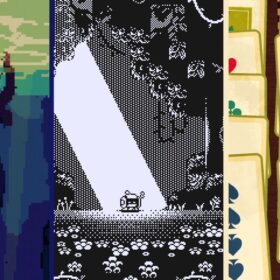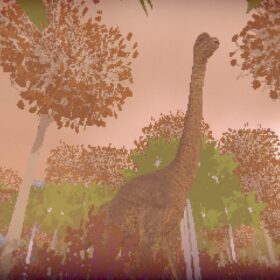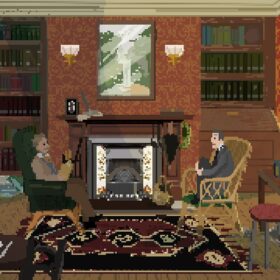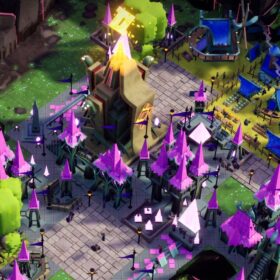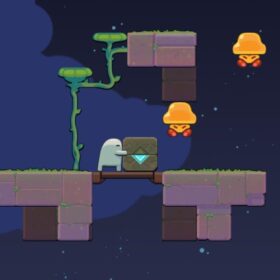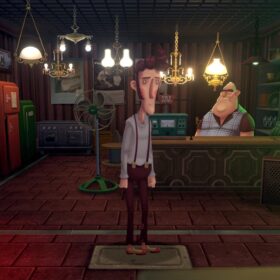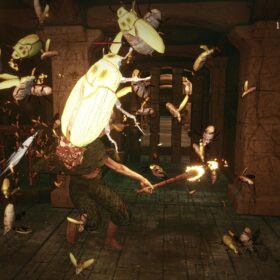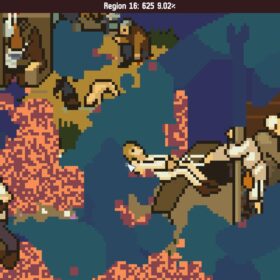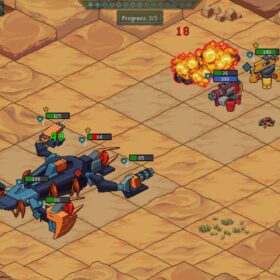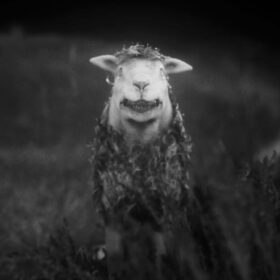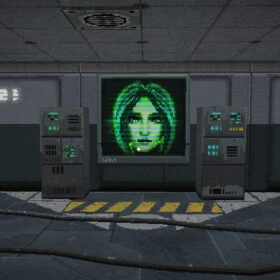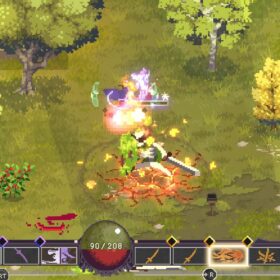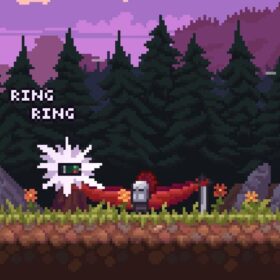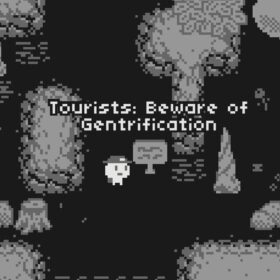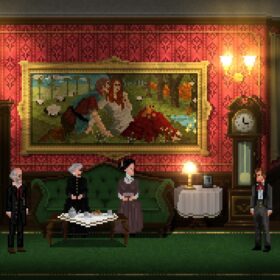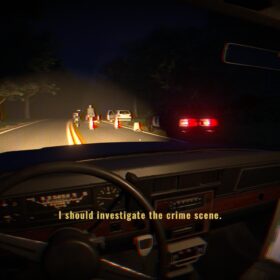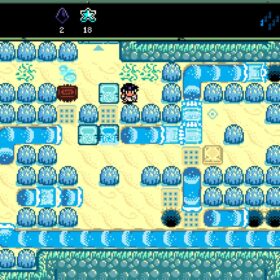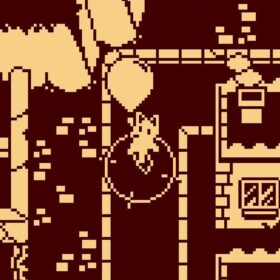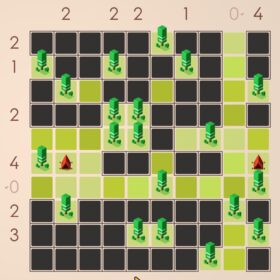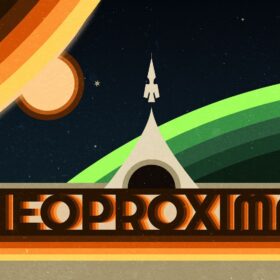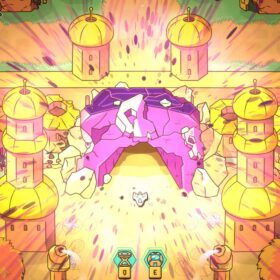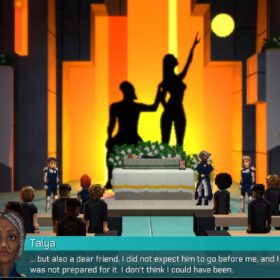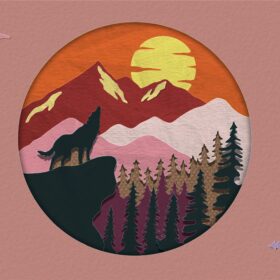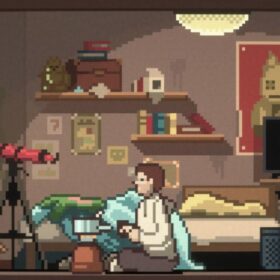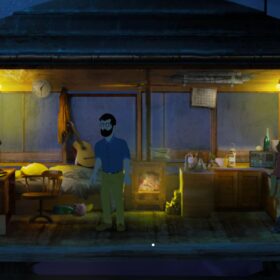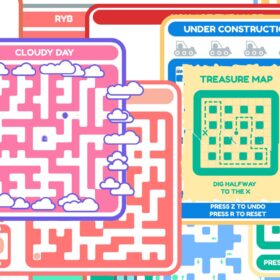
PC, Family friendly
What price beauty? That’s a question I kept asking myself throughout Luna: The Shadow Dust (a game nothing to do with the 700 other games out there called Luna). It is outstandingly beautiful in every moment, its Ghibli-inspired art and animation absolutely breathtaking. With every new screen I would gasp at the intricate and gorgeous detail. Audibly gasp. I’m trying to work out if that was enough to override my frustrations with the design.
In this wordless puzzle adventure, you play someone the game’s literature only calls “the boy” (despite my thinking it a girl throughout), a young character wearing dungarees and a very fetching bunny rabbit hoodie. He’s accompanied by an odd little beastie, apparently just called “the pet”. So we’ll go with Boy and Pet. Together you play a single-player co-op collection of puzzles, in which the pair must ascend their way up a tall, tall tower, for reasons completely unknown at the start of the game.
Indeed, this is one of those tales where the plot is understood in retrospect come the closing cinematic, and it does this extremely well. But it does make it a pest to write about. What I can say is that there’s something mysterious going on with the shadows, as will be a crucial part of a lot of the puzzle solving.

But what is unambiguous from the very beginning is that this is visually something very special. (I’m bewildered that this only received an honourable mention in this year’s forthcoming IGF Awards – that seems a gross oversight.) Somehow a Kickstarter-funded team of four have created professional level animation work that could be held up against the best of anime. And it’s by no means just the 20 minutes of cinematics – every animation, every movement, in every screen, is spellbinding. It is in the true sense of the word, awesome.
It’s also really very slow. Needlessly, tiresomely slow. I would say the majority of Luna’s mostly decent puzzles require experimenting with equipment, levers, wheels, and character positioning, to work out what does what, and why you want to do it. Which is no bad thing, apart from how ridiculously slowly both characters move between them all.

Part of this is the lovingly delivered animations, meaning climbing onto a box, or into a lift, isn’t a blip. But the larger issue is how many times you have to climb onto a box or into a lift. Inevitably you’ll discover that pulling that one lever does X, but pulling the other might not do Y, and instead Z causes you to fall back down, or need to restart. Or you’ll have to move back and forth between two locations to learn what pressing a button is doing. Then another button. And then another. While this is sometimes made much easier by putting either character in each place, then switching between them, oftentimes this isn’t possible. After a while it starts to feel punishing, that experimenting costs you so much wandering about, going to and fro, at such a slow pace. Oh good gracious Pet climbs ladders soooo slowwwwwwllly.

And then I solve the puzzle, go through the next door, and my breath is taken away all over again. Another astounding room, so meticulously realised, that then bursts full of new colour when I interact in some way. And I’m just so happy! So many scenes ripple and change and flourish and evolve, and being involved in this, being rewarded by it for success, is incredibly gratifying. It does huge amounts to balance my wish that Boy and Pet would just flipping get on with it.

The puzzles are solid, and while some are a little tired (put the objects in the right order to play the tune back), others are properly clever. There’s one involving a magical season-changing button, and the need to foster a tree through all four seasons, while juggling between the two characters and which of them is currently turned to stone… Another has a fresh and interesting take on a time travel puzzle, made even better by the past being rendered as rougher sketched versions of the scene and characters. And that’s not to mention the ones that so cleverly use the shadows, but that’s yours to discover.

The only slightly squiffy puzzle comes right near the end, but it could be that I was being a thicko. And then comes that end, and it’s another lengthy amazing cinematic that pulls all the pieces of the story together, with a bonus post-credits cutscene if you’ve been a cleverclogs and managed to reach the secret area earlier on. I was a cleverclogs.

So what price beauty? Patience. And how much you have with the game will determine your enjoyment. For me, an hour or so after finishing it, I’m already finding the memory of the irritations melting away, and the lovely art and story taking over. But the exasperation happened, and it’s my job to say so.
That’s the deal. You will be aggravated by the need to repeat a puzzle at such a slow pace in order to know how to finish it (especially the one with the damned crow, or fathoming the order of the cooking pot), but then you’ll be met with such sumptuousness you’ll instantly forget and start over.

- Lantern Studio / Coconut Island Games / Application Systems Heidelberg
- GOG, Steam, Humble
- $17.75
- Official site
All Buried Treasure articles are funded by Patreon backers. If you want to see more reviews of great indie games, please consider backing this project.




